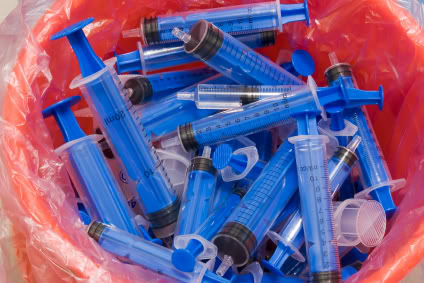HMIWI Final NSPS/EG: SSM Exemption Removed, Perceived MACT-on- MACT/Pollutant-by-Pollutant Approach
Posted: October 29th, 2009
Author: All4 Staff
We posed the question in the March 2009 issue of 4 The Record as to why a rule about hospital, medical, and infectious waste incineration would get the attention of the American Forest & Paper Association (AF&PA), the American Chemistry Council (ACC), the Alliance of Automobile Manufacturers (AAM), the Cement Kiln Recycling Coalition (CKRC), the Brick Industry Association (BIA), the Utility Air Regulatory Group (UARG), the Portland Cement Association (PCA), and the Council of Industrial Boiler Owners (CIBO), among others?
The Clean Air Act (CAA) Section 129 hospital, medical, and infectious waste incinerator (HMIWI) maximum achievable control technology (MACT) rules proposed in December 2008 included both a response to a court-ordered remand and a five-year review. There were a number of substantial objections to the proposed rules, which are viewed by the industry as being unachievable. However, the common objection amongst the various comments was the underlying argument that U.S. EPA used a “MACT-on-MACT” methodology for establishing the proposed new emission limitations for both new and existing HMIWI.
Commenters also believed that U.S. EPA selectively established MACT floors for each of the nine (9) regulated pollutants individually on a pollutant-by-pollutant basis using the best-performing units for each pollutant. By establishing new individual MACT floors for each of the nine pollutants, U.S. EPA essentially created limitations that only a theoretical unit with the best control for each pollutant could meet.
On September 15, 2009, U.S. EPA signed the final HMIWI New Source Performance Standards (NSPS) and Emission Guidelines (EG) (published in the Federal Register on October 6, 2009). The perceived MACT-on-MACT methodology was maintained and U.S. EPA indicated that they believed that their approach was not MACT-on-MACT. Additionally, U.S. EPA maintained their pollutant-by-pollutant approach. So what did U.S. EPA change?
- U.S. EPA removed the Startup, Shutdown, and Malfunction (SSM) provisions from the rule. Yes, you read that right. For those following the SSM vacatur, you’re aware of the partial vacatur of portions of the General Provisions of 40 CFR Part 63 (i.e., Subpart A) for the CAA Section 112 MACT standards and that U.S. EPA is currently working through “what this means” for those affected under Subpart A of 40 CFR Part 63. U.S. EPA currently has a 60-day stay on the mandate of vacatur. Needless to say, we were quite surprised that U.S. EPA took the next step and applied the CAA Section 112 SSM concerns and removed the SSM provisions from the CAA Section 129 rule without final consideration of the vacatur on the CAA Section 112 standards.
- U.S. EPA reconsidered their statistical
approach to defining emission standards and made some changes. Their changes resulted in final emission limits that are more stringent than the 2007 proposed emissions limits but less stringent than the 2008 proposed emission limits. For those interested, U.S. EPA utilized a 99% upper confidence interval, considered data distribution (i.e., normal or log-normal), and utilized the student t-test.
- U.S. EPA strengthened the Waste Management Plan requirements, specifically for commercial units.
Our opinion is that the potential implications of the rule and U.S. EPA’s approach to establishing MACT standards will be manifested in future regulatory developments that could impact the facilities behind the various industry organizations that commented on the proposed rule. While these are the major highlights of the final rule, U.S. EPA did make other changes.

 approach to defining emission standards and made some changes. Their changes resulted in final emission limits that are more stringent than the 2007 proposed emissions limits but less stringent than the 2008 proposed emission limits. For those interested, U.S. EPA utilized a 99% upper confidence interval, considered data distribution (i.e., normal or log-normal), and utilized the student t-test.
approach to defining emission standards and made some changes. Their changes resulted in final emission limits that are more stringent than the 2007 proposed emissions limits but less stringent than the 2008 proposed emission limits. For those interested, U.S. EPA utilized a 99% upper confidence interval, considered data distribution (i.e., normal or log-normal), and utilized the student t-test.